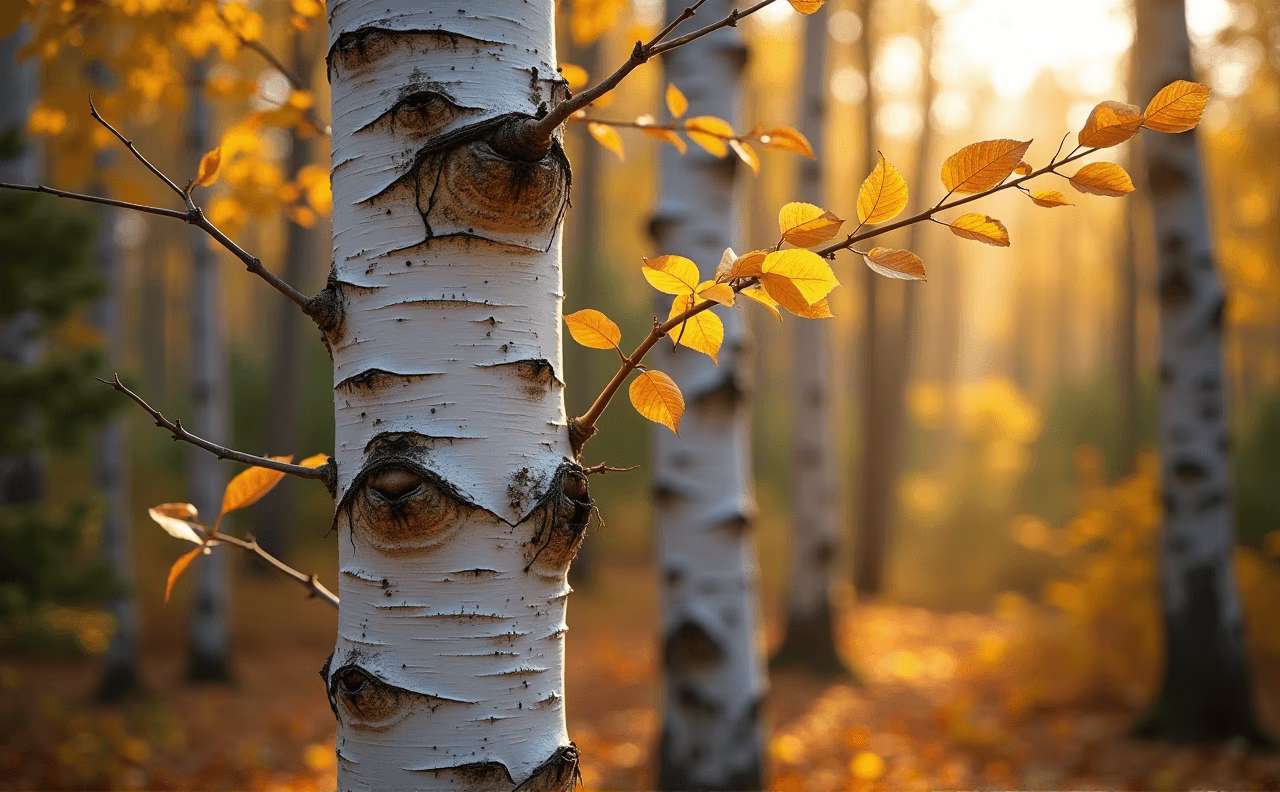
Paper Birch
Betula papyrifera
Grow Time
10-15 years
Sunlight
Full Sun
Watering
Every 5-7 days
Toxicity
Non-toxic
Video content from YouTube
Watch on YouTubeHow to plant Paper Birch: Step-by-Step Guide
Growing Guide
Preparation
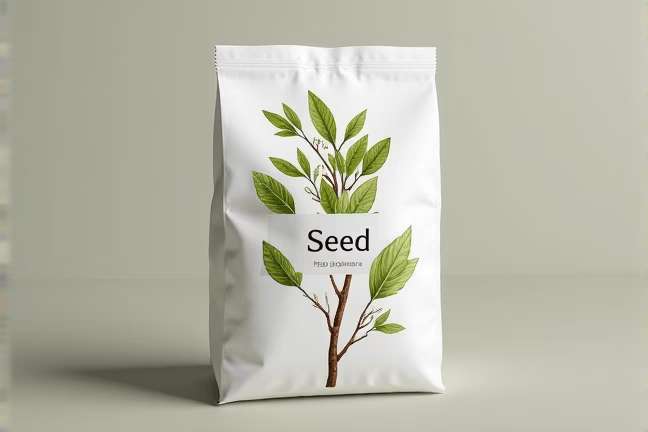
What you'll need:

Paper Birch tree sapling (easier than starting from seed)

Well-draining soil (Paper Birch trees like soil that doesn’t stay soggy)

Mulch (wood chips, bark, or shredded leaves work well)

Watering can or hose
- A spacious area in your yard or garden
Choosing the right location:
Paper Birch trees can grow quite large, so make sure you have enough space for it to thrive. They typically reach 50-70 feet tall and spread about 35 feet wide. Pick a spot with full sun to partial shade—they love sunlight but can handle some shade too.
When to plant:
The best time to plant is in early spring or fall when the weather isn't too hot or cold. This allows the roots to settle before extreme temperatures hit.
Preparing the soil:
If your soil is heavy clay or very sandy, mix in some compost or peat moss to improve drainage. Paper Birch trees do best in moist, slightly acidic soil, so if your soil tends to be more alkaline, consider adding some pine needles or sulfur to lower the pH.
Planting
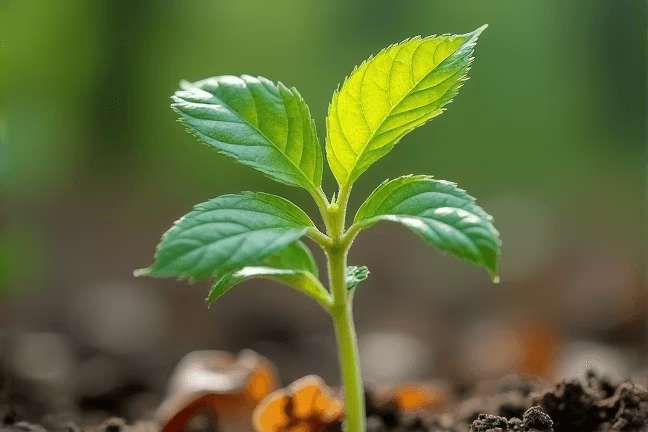
Steps to Plant Your Paper Birch Tree:
- Digging the hole:
- Dig a hole that’s about twice as wide as the root ball of your sapling but just as deep. This gives the roots plenty of room to spread out.
- Positioning the tree:
- Place the sapling in the center of the hole. Make sure the top of the root ball is level with the surrounding ground. You don’t want it sitting too high or too low.
- Backfilling:
- Fill the hole back up with the soil you dug out, gently pressing it down as you go. Be careful not to pack the soil too tightly; the roots need to breathe!
- Water thoroughly:
- After planting, give the tree a good, long drink of water. This helps settle the soil around the roots and kickstarts their growth.
- Mulching:
- Spread a layer of mulch (about 2-3 inches thick) around the base of the tree, but keep it a few inches away from the trunk. Mulch helps retain moisture and keeps weeds at bay.
Tip: Don’t pile mulch against the trunk, as this can cause rot or invite pests. Think of a “donut” shape around the tree instead of a “volcano.”
Growing Care
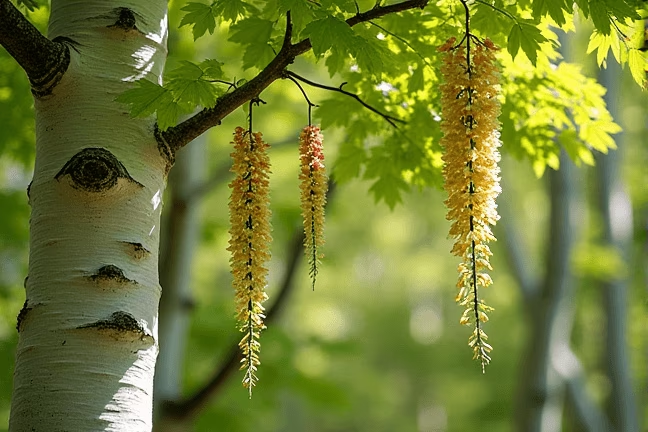
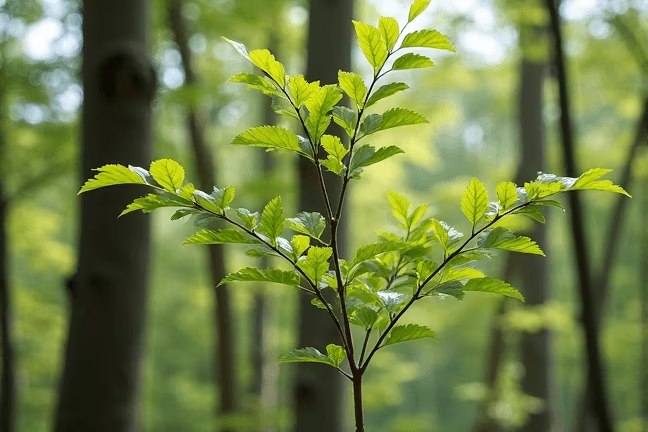

Watering:
- Paper Birch trees like moist soil, especially when they’re young. Water deeply once or twice a week, depending on how dry your climate is. If it rains, you might not need to water as often.
- As the tree matures, it will become more drought-tolerant, but during the first few years, consistent watering is key.
Fertilizing:
- You don’t need to fertilize your Paper Birch tree right away. If you notice slow growth after a year or two, you can use a balanced, slow-release fertilizer in early spring.
- Avoid over-fertilizing, as this can lead to weak growth and make the tree more prone to pests.
Pruning:
- Prune your Paper Birch tree in late fall or early winter when it’s dormant. Remove any dead, damaged, or crossing branches to encourage healthy growth.
- Try not to prune too much at once, as Paper Birch trees can be sensitive to heavy pruning.
Sunlight:
- Remember, these trees love sunlight! Make sure they get plenty of direct light, although they can tolerate some shade, especially when they're younger.
Pest Watch:
- Keep an eye out for common pests like the bronze birch borer. If you notice the leaves looking unhealthy or branches dying off, it could be a sign of pests. Regular watering and proper care can help prevent infestations.
Harvesting
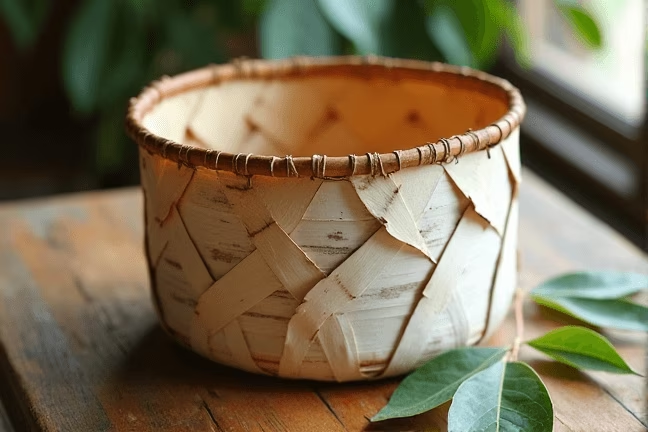
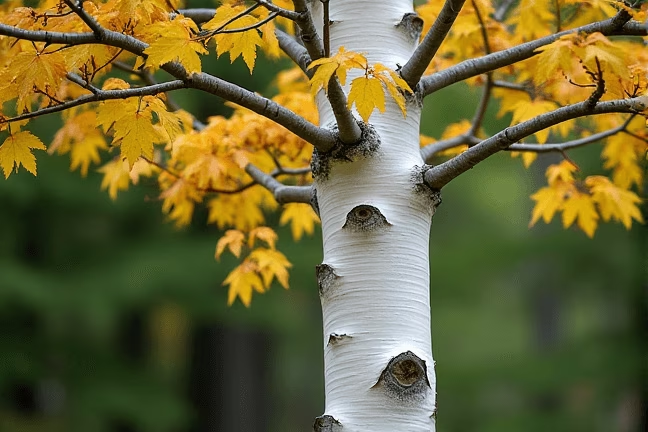

Unlike fruit trees or vegetable plants, Paper Birch trees aren’t typically “harvested” in the traditional sense. However, you can enjoy their beauty and even collect fallen leaves or small twigs for crafts or decoration. Here are a few ways to appreciate your Paper Birch:
- Bark: The tree's papery white bark is one of its most distinctive features. Over time, the outer layers naturally peel away. You can collect small pieces of the bark that have fallen naturally, but avoid peeling it directly from the tree, as this can harm it.
- Leaves: In the fall, the leaves turn a beautiful yellow color. You can gather them for autumn decorations or press them for art projects.
- Shade & Beauty: One of the biggest "harvests" you’ll get from your Paper Birch is shade and aesthetic appeal. These trees add elegance to any landscape with their striking white bark and delicate leaves.
Plant Care FAQ
Q: Why are the leaves on my Paper Birch turning yellow?
A: Yellowing leaves can be caused by several things. It could mean the tree is getting too much water, not enough water, or there might be an issue with the soil nutrients. Check your watering schedule and make sure the soil drains well. If needed, add some compost or fertilizer in the spring.
Q: Can I plant other plants under my Paper Birch tree?
A: Yes, but be mindful of what you plant. Paper Birch trees have shallow roots, so avoid planting anything too close to the trunk that might compete for nutrients. Ground covers like hostas or ferns work well because they thrive in shaded areas and won’t disturb the roots too much.
Q: How fast does a Paper Birch tree grow?
A: Paper Birch trees are considered moderate growers. They can grow anywhere from 1 to 2 feet per year, depending on the conditions. With proper care, they’ll reach their full height in about 20-30 years.
Q: My Paper Birch tree’s bark is peeling. Is something wrong?
A: Not necessarily! Paper Birch trees naturally shed their outer bark layers. This is normal and gives the tree its characteristic look. Just let the bark fall naturally and avoid pulling it off yourself.
Q: How do I protect my Paper Birch from pests?
A: Keeping the tree healthy is the best defense. Proper watering, especially during dry spells, will help. If you notice signs of pests like the bronze birch borer, you may need to consult with a local nursery or arborist for specific treatments.
Pro Tips
1. Group Planting
Consider planting your Paper Birch tree in a group of three or more. This mimics how they grow in the wild and creates a stunning visual effect with their white bark standing out together.2. Companion Planting
Plant shade-loving flowers like astilbes or hostas around the base of your tree. They’ll benefit from the dappled shade and won’t interfere with the tree’s shallow roots.3. Seasonal Care
In winter, wrap the trunk with a tree guard to protect it from frost cracking, especially in colder climates. This helps prevent damage from the freeze-thaw cycle.4. Grass-Free Zone
Keep the area around the base of the tree free from grass. Grass competes with the tree for water and nutrients. Use mulch to create a grass-free zone around the trunk.5. Water Deeply
When you water, do it deeply but less frequently. This encourages the roots to grow deeper into the soil, which makes the tree stronger and more resilient.6. Avoid Compaction
Be careful not to compact the soil around your Paper Birch, especially near the roots. Avoid walking or placing heavy objects near the tree’s base, as this can suffocate the roots.7. Natural Mulch
Instead of using store-bought mulch, try using fallen leaves from the tree itself. This provides natural nutrients as the leaves break down and helps retain moisture in the soil.